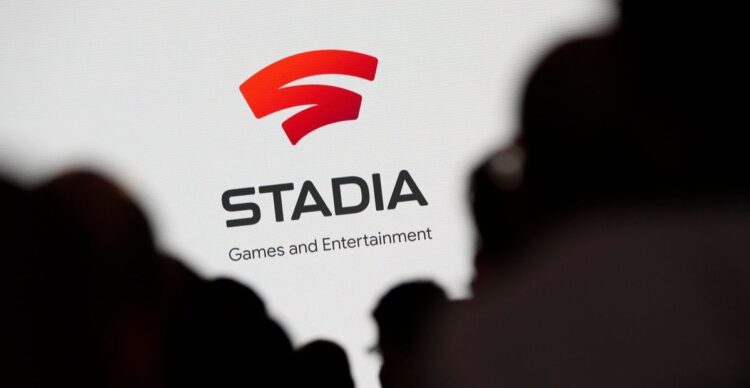At a press conference a full week ahead of E3, Google announced all that we need to know about their Stadia cloud gaming platform. In case you’re lost, Google Stadia is the company’s entrant to the world of cloud gaming. Rather than having a high-end desktop or laptop, you can stream games to your TV, computer, or smartphone without the need for expensive hardware.
What exactly do I get with Google Stadia?

Well, for starters, there are two tiers of subscription for Google Stadia. They are Stadia Base and Stadia Pro. While the former is free, the latter will cost $9.99 per month. However, Stadia Base will be available only in 2020 whereas Stadia Pro will be available from November this year. There are multiple catches though. For starters, Stadia will only be available to a few countries at launch. These are Belgium, Finland, Canada, Denmark, France, Germany, Ireland, Italy, Netherlands, Norway, Spain, Sweden, the United Kingdom, and the USA.

In addition, Stadia Pro will be part of what Google calls the “Founder’s Edition”. Retailing for $130, the Founder’s Edition will include a Google Chromecast Ultra, a limited edition dark blue Stadia controller, and 3 months of Stadia Pro for free. Along with that, you also get a Stadia Buddy pass so your friend can have 3 months of Google Stadia Pro for free as well. You will also have the ability to pick an exclusive Stadia Name and receive a copy of Destiny 2: The Collection. Needless to say, this means you get all the DLCs and updates for Destiny 2.
What are the games that will work on Google Stadia?
One thing that should be highlighted is that the $9.99 subscription fee doesn’t take into account the price of the games. It’s just the Google Stadia subscription. The only game you get free is Destiny 2. That is either via the Founder’s Edition or by paying the monthly subscription fee. Jack Buser – Director for Games and Business Development at Google explained to The Verge that “We will sell these games like any other digital storefront”.

As for the games themselves, there are over 30 titles coming to Google Stadia with more expected towards the latter of 2019 and early 2020. These include Doom 2016 & Doom Eternal Rage 2, GRID, Metro Exodus, Baldur’s Gate 3, Final Fantasy XV, Tomb Raider, Borderlands 3, Mortal Kombat 11, Assassin’s Creed Odyssey, Tom Clancy’s Ghost Recon Breakpoint and The Division 2 and The Crew 2.
What performance can I expect with Google Stadia?
The key selling point for Google Stadia is that you can play games at 4K resolution with HDR at up to 60 FPS. If you’re a gamer, you would know that this is pretty much the pinnacle of a gaming experience. If you’re a competitive gamer though, you’d probably drop the resolution down and get above 100FPS for those split-second headshots.

Once again, there’s a catch. While Stadia Pro gives you all the bells and whistles of 4K, 60FPS gaming with 5.1 surround sound, you’ll also need at least a bandwidth of 35Mbps in terms of internet. Stadia Base on the other hand is limited to 1080p at 60FPS with stereo sound alongside a 10Mbps connection.
What can I use Google Stadia on?
Well, if you invest in the Founder’s Edition, you can use the Chromecast Ultra and hook it up to your TV. In addition, Google’s Pixel 3 and Pixel 3a will be getting a companion app to make gaming on the go a possibility. However, if you don’t currently own a Pixel device, you will have to wait till 2020 as Google Stadia makes its way to more devices. According to Andrey Doronichev – Project Manager of Stadia, “We want to be everywhere”.

Doronichev went on to share that there’s no particular speech for Android devices, but we can assume that the higher end of the device, the better the performance would be. It should also be noted that this applies only to gaming using wired Ethernet and Wi-Fi connections. If you’re on a mobile data connection, “you should not expect your existing cellular connection to work”. Perhaps this is where 5G comes into the picture.
Is Google Stadia worth it?
That is the all-important question. For me, it feels too good to be true. While the promise of 4K 60FPS gaming is drool-worthy, there are practical considerations to be looked at. The first is bandwidth. While Sri Lanka does have the cheapest internet rates, bandwidth is not something that we have in abundance.
That being said, we still have to factor in the cost of the games themselves which would roughly be around $60. Nonetheless, $130 is still cheaper than any console or gaming PC currently available. While we would have to spend on the game alone, the fact that we do not need additional hardware is a big plus. For those who can’t afford a Google Pixel, Google Chrome would just about handle everything perfectly. However, even then, Stadia requires a stable internet connection, with a generous data cap.
All in all, game streaming is likely to become a hot topic in the coming days. This is especially true with E3 2019 around the corner. Both Sony and Microsoft are presumably working on their own cloud gaming platforms and Amazon might be working on one as well. We are yet to find out how Stadia will perform in real-world scenarios. But one thing is certain: cloud gaming is definitely going to turn some heads.







I still can remember when someone at Google explained Google+ was not a social network but a “hub to the web” … while it was actually/obviously/blatantly a social network.
Right now they start the same path, saying Stadia Pro is not a game streaming platform … while everybody can see it.
Do your bet: how long will life of Stadia?